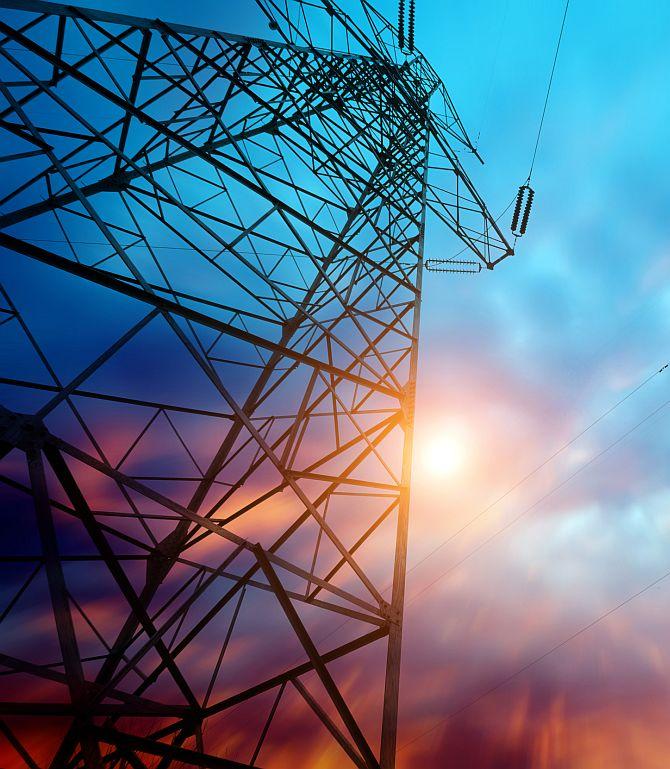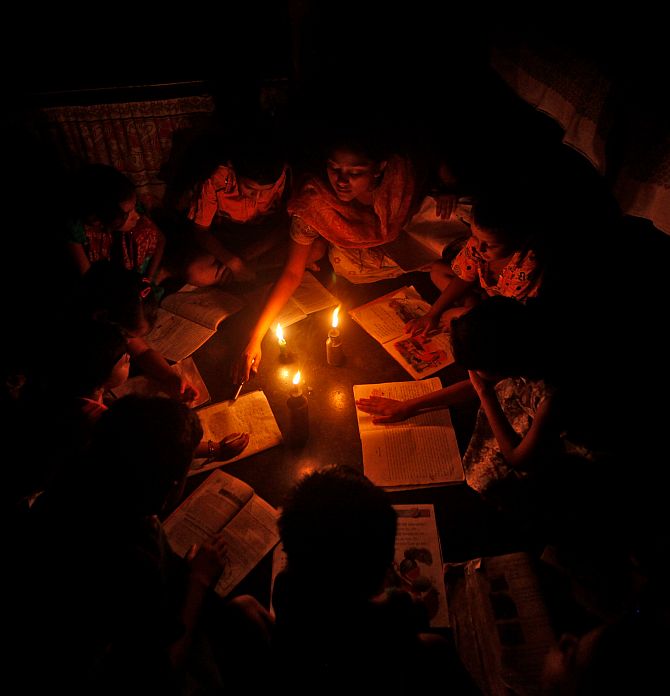 | « Back to article | Print this article |
'Powerful' Seemandhra has an upper hand
Seemandhra to be a surplus state; Telangana will have to depend on other regions, says B Dasarath Reddy
The creation of a separate Telangana state would put political ‘power’ back into the hands of Telangana leaders. The region would face estrangement from its Andhra counterpart. And, this time, the issue would be ‘electric power’.
Observers say the new governments for Telangana and the rest of Andhra Pradesh would be in place by January 2014, if things go according to plan. That is about the time power consumption in the state starts to rise, as pumping ground water for rabi cultivation picks up in Telangana.
There are serious imbalances in the consumption and generation of power between the two regions, and this is expected to come into the picture after the bifurcation.
With 10 districts, the Telangana region, including the state capital of Hyderabad, consumes more power than the Seemandhra region’s 13 districts, largely on the back of higher agriculture and industrial demand.
But it lags in power generation -- a reason why Seemandhra would instantly become a surplus-state after the bifurcation, while Telangana would have to depend on other regions, including Seemandhra, to meet most of its energy demand.
Click on NEXT to read further...
'Powerful' Seemandhra has an upper hand
According to the district-wise power supply quota fixed for October this year, Telangana has been allocated 130.1 million units (mu), while the rest of the state has been given 125.34 mu of the total average daily consumption of 255.45 mu.
In the rabi season, the consumption pattern sees a change in favour of Telangana, as about 65 per cent of about 3.5 million agriculture pump set connections are concentrated in this region.
Of the 8,924.86 Mw installed capacity in the hands of state power utility APGenco, about 54 per cent (4,825 Mw) is located in Telangana, while 46 per cent is in the Seemandhra region. However, on close scrutiny, one finds 52 per cent capacity in Telangana lies in hydro power, which is available only when reservoirs receive good inflows, while just 48 per cent capacity is available in coal-fired power plants. On the other hand, Seemandhra has 69 per cent thermal capacity, with 31.46 per cent hydel power capacity.
Recently, Telangana Rashtra Samithi president K Chandrasekhara Rao admitted there would be an immediate demand-supply mismatch of up to 2,500 Mw for Telangana, after the bifurcation. Considering the limited dependence on hydel capacity, possible power shortages facing Telangana would be much higher, experts say. As the government extends free power to the agriculture sector, higher agriculture consumption entails higher government subsidies in Telangana.
The imbalance between the two regions in terms of generation capacity is set to increase after the projects under execution are added to the grid. Currently, APGenco is building 3,210-Mw capacity plants. Of these, 70 per cent (2,250 Mw is located in coastal Andhra and only 30 per cent (960 Mw) is coming up in the Telangana region.
Click on NEXT to read further...
'Powerful' Seemandhra has an upper hand
Moreover, a capacity of 14,198 Mw is available for the state. While only about half the peak demand is met by APGenco, the rest comes from private and central generation capacity. The government has power purchase agreements with about 3,031 Mw of gas-based power projects owned by private companies; all are located in coastal Andhra. An additional 1,000-2,000 Mw power is purchased on a short-term basis during higher demand period.
Even as gas power purchase agreements are expected to be divided between the two states, it gives no respite to Telangana, as there is no natural gas to run these plants.
“In the existing circumstances, Telangana will have to depend on the residual Andhra state for meeting its energy needs,” said a senior energy department official. Corridor constraints that existed between the South and the rest of the region were expected to restrict Telangana’s options to import power from other regions without depending on Andhra, the official said.
A potential dispute in the use of hydro power by Telangana is expected to arise, particularly in case of Nagarjuna Sagar, essentially built for irrigation in both the regions, say APGenco officials.
However, a large base of private merchant power plants was being created in coastal Andhra, both for gas and coal-fired thermal capacity, and these would be willing to sell power to the power-deficit Telangana, industry representatives said.



